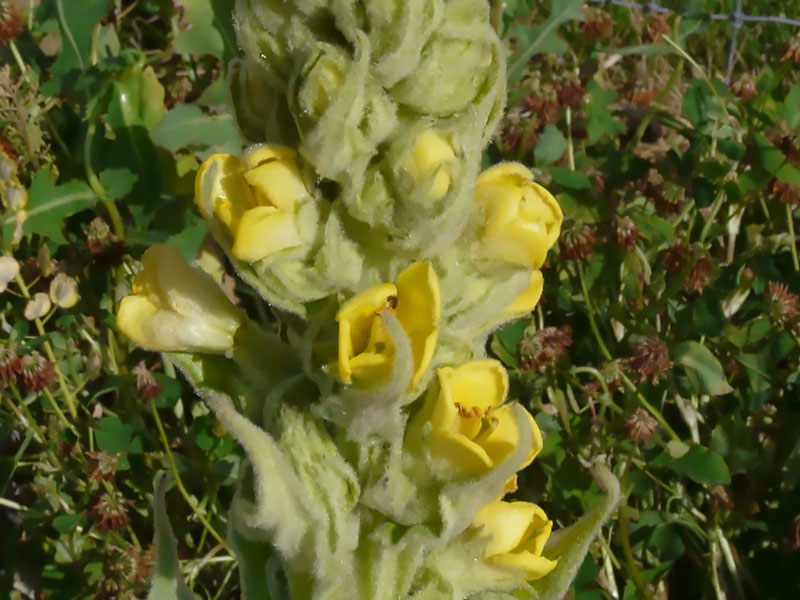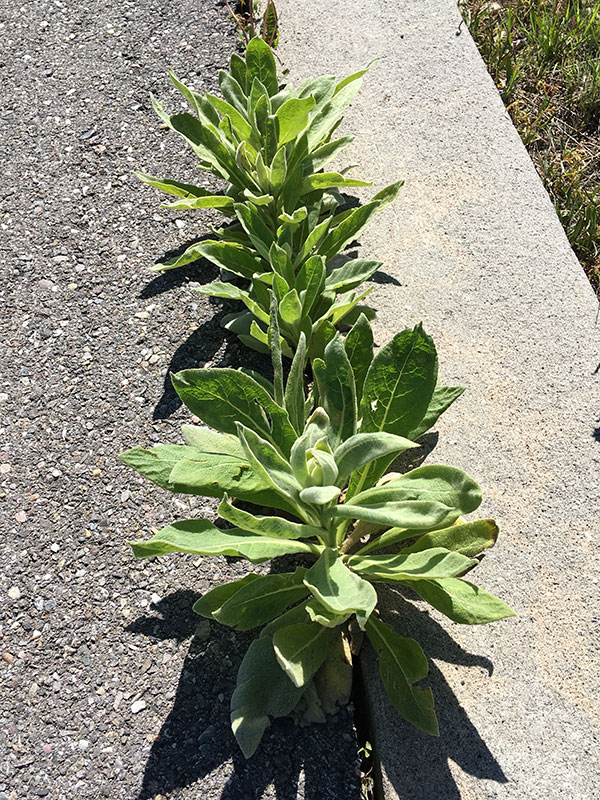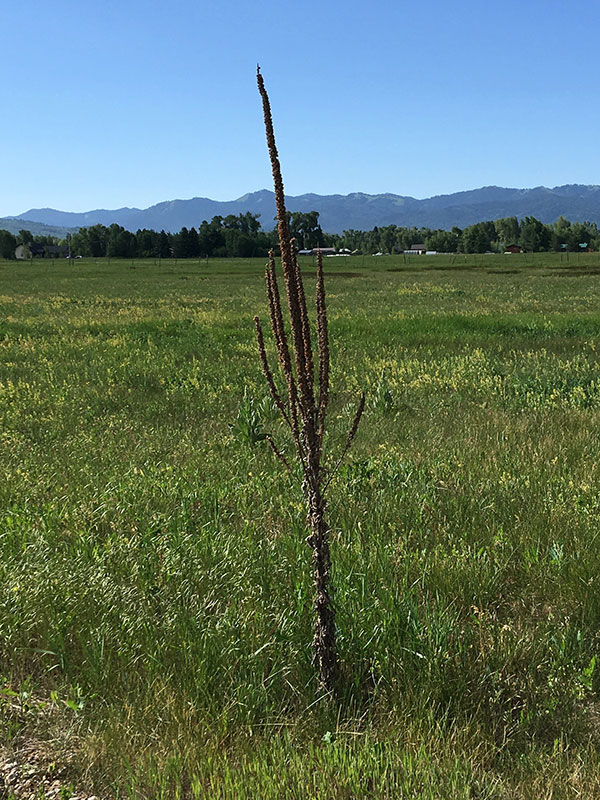Verbascum thapsus / mullein
- rosette of large, soft, hairy leaves
- small yellow flowers densely packed on a very tall spike
- persistent ugly brown spike after flowering is done
- often on otherwise bare ground
Also known as: great mullein (Europe), common mullein (US), cowboy toilet paper (Western US), big taper, flannel mullein, flannel plant, velvet dock, velvet plant, woolly mullein. Wikipedia lists a whole bundle of other common names but notes that mullein derives from a French word for soft.
Mullein is a biennial with a rosette of large, fuzzy leaves. These are pretty much a dead giveaway that you are looking at mullein. They are soft to the touch because of thickly packed star-shaped hairs (trichomes). This is the obvious trait making them sometimes known as cowboy toilet paper.
The flowers are small and yellow. They occur on a spike taking up half or more of the tall stem (up to 6 feet), growing from the rosette. The flowers open for only part of the day and only a few flowers are open at any time. While insects do visit and pollinate, mullein will self-pollinate at the end of the day if they haven’t visited. Flowering starts in late spring and goes on through July in the Valley. The seed stalk persists over winter, looking uglier by the day. Each flower has, by then, resulted in a capsule with a large number of millimeter-sized seeds. There is no specific mechanism for dispersing these, however, and they generally don’t fall far from the mom. The seeds persist in the soil for decades, to more than 100 years, eventually to sprout from seemingly bare soil.
Mullein is considered invasive in several states and is otherwise weedy. It does not, however, tolerate competition, shading or tilling so overall, individual populations are ephemeral and easy to control. It grows best in dry, sandy, gravelly, disturbed soils (like roadsides and pavement joints). It only germinates, however, if the seeds are on or very close to the surface.
Mullein has been used by people for well over 2000 years. The flowers have been used to produce a yellow dye for fabrics or hair. And that would work. The plant has also been used to ward off curses and evil spirits. That use may be questioned. It has used as a remedy for all manner of diseases and discomforts, quite probably without much success, but the leaves are sometimes still used as insoles for sore-footed hikers. The plant was probably (or at least possibly) imported to America in early colonial times as a tool to sting or kill fish to facilitate their harvesting; several of its chemical constituents are indeed piscicidal.
| Color | |
|---|---|
| Family | |
| Blossom size | |
| Inflorescence size | |
| Inflorescence type | |
| When? | |
| Where? |






sm.jpg)



